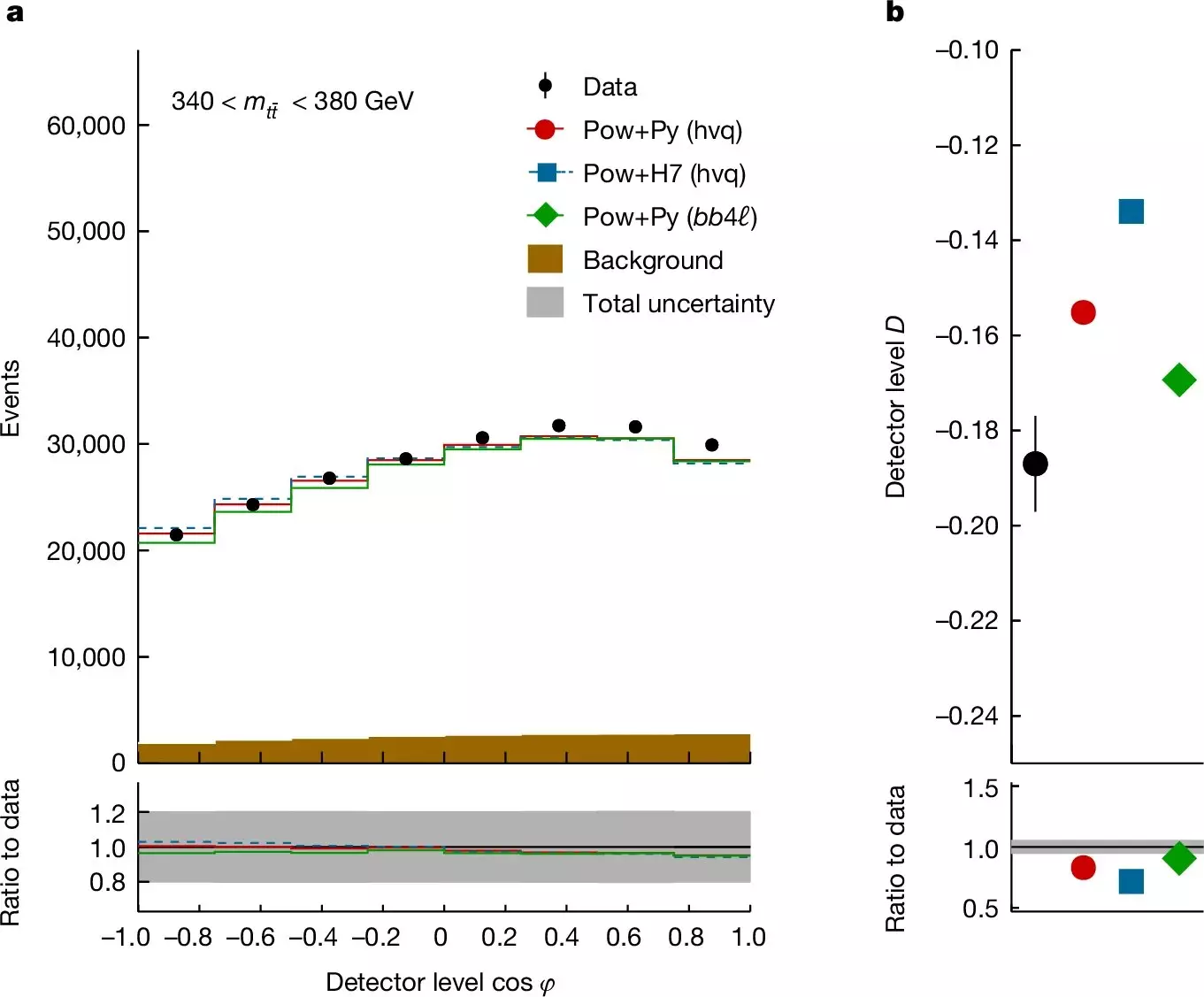Quantum entanglement, a pivotal concept in quantum mechanics, describes a unique link between particles, such that the state of one particle is inherently related to that of another, irrespective of the distance separating them. This phenomenon challenges our classical understanding of physics, as it implies a level of connectedness between particles that defies the conventional idea of locality; effects can be felt instantaneously over vast distances. The implications of quantum entanglement reach far into multiple fields, including quantum cryptography and quantum computing, but until recently, much of the phenomenon had yet to be explored within the realm of high-energy particle physics.
In 2022, the Physics community celebrated Alain Aspect, John F. Clauser, and Anton Zeilinger, who received the Nobel Prize for their pioneering work with entangled photons. Their experiments verified the predictions set forth by John Bell, further cementing the foundations laid for quantum information science. This recognition was not merely a celebration of historical experiments but a pivotal moment encouraging deeper investigations into quantum phenomena, including entanglement, especially in environments traditionally dominated by classical physics.
Fast forward to September 2023, when a remarkable breakthrough occurred: the ATLAS collaboration reported the observation of quantum entanglement at the Large Hadron Collider (LHC) for the first time, specifically concerning fundamental particles known as top quarks. This discovery marked an exceptional advancement, as it occurred at unprecedented energy levels, extending our understanding of quantum entanglement into realms previously unattainable. The collaboration’s findings not only showcase the robustness of quantum mechanics but also pave the way for extensive future research.
The ATLAS and CMS collaborations employed an innovative approach to examine pairs of top quarks, the heaviest fundamental particle known. The experimental design involved analyzing data collected from proton-proton collisions at an energy of 13 teraelectronvolts, gathered during the LHC’s second operational run from 2015 to 2018. By identifying pairs of top quarks produced simultaneously with low momentum relative to one another, physicists aimed to reveal strong entanglement relationships between the particles.
This examination stemmed from the understanding that the spin of the top quark—an intrinsic form of angular momentum—would be transferred to its decay products, leaving a detectable signature of entanglement. Through meticulous measurements of the angular distributions of the resulting electrically charged products, researchers inferred the entanglement degree. Notably, both ATLAS and CMS teams achieved a statistical significance exceeding five standard deviations in their observations, affirming the robustness of these findings.
The CMS collaboration did not stop at low momentum observations. In their subsequent studies, they investigated pairs of top quarks with high momentum relative to each other. In such scenarios, the expected positions and decay times of the top quarks lead to entanglement scenarios inaccessible through classical laws of physics. They found evidence for spin entanglement, reinforcing the notion that at high energies, quantum effects exhibit properties absent in classical frameworks.
As Patricia McBride, spokesperson for the CMS collaboration notes, this breakthrough opens avenues for not only testing the Standard Model of particle physics but also delving into hypotheses that push beyond established physics. The ability to observe quantum entanglement within such a unique particle system at unprecedented energy levels signifies more than just an academic achievement—it’s a paradigm shift that invites speculation and exploration into the fundamental nature of reality itself.
With the successful observation of quantum entanglement at high-energy environments, we stand at the threshold of a remarkable new era in particle physics. The fertile ground created by these findings could lead to groundbreaking innovations in quantum technology and deepen our understanding of the universe’s most fundamental laws. As experimental data continues to grow and new methodologies emerge, physicists are not only poised to explore entanglement in more detail but also to potentially uncover new forms of physics.
The intertwining of quantum mechanics and high-energy physics has reached an exciting juncture, promising both challenges and extraordinary possibilities that could transform how we comprehend the universe. From enhanced computational capabilities to secure information transfer, the implications of these advances in quantum entanglement could shape the trajectory of technology and theoretical physics for generations to come.


Leave a Reply